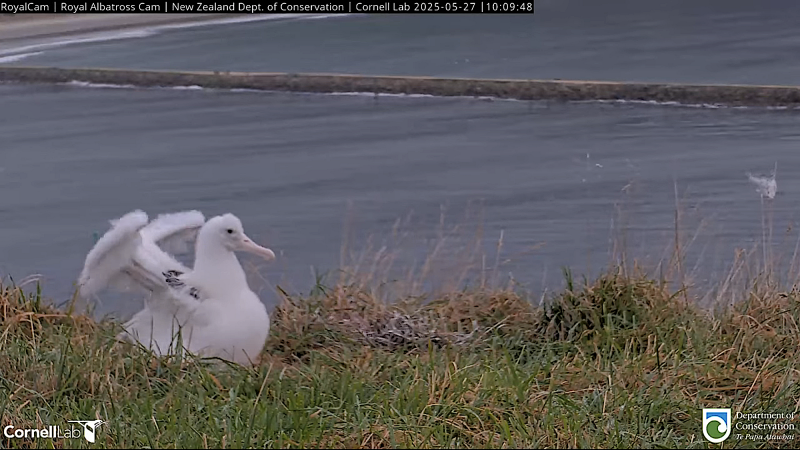Royal Albatross Ranger Sharyn posts that "the Signal Station Trig chick has grown to 6.5 kg on day 119 (Tuesday 27th of May, 10.07 am). This is a 700g increase on last week’s weight. Today’s weight is 0.7 kg below average for a female toroa chick of this age but just within the healthy weight range so there was no supplementary feeding required today. She was also fed by a parent at 3.36pm today which will have pushed her weight closer to the average."
So even though supp fed still just under the average. They burn calories in growing (transforming) and staying warm
The Down is coming off the wings now



#RoyalCam chick says close enough with clippers, clack clack 😊. Thanks for grass and cam attention, Sharyn.


 Author
Topic: Northern Royal Albatross New Zealand South Island Cornell Labs (Read 134830 times)
Author
Topic: Northern Royal Albatross New Zealand South Island Cornell Labs (Read 134830 times)
